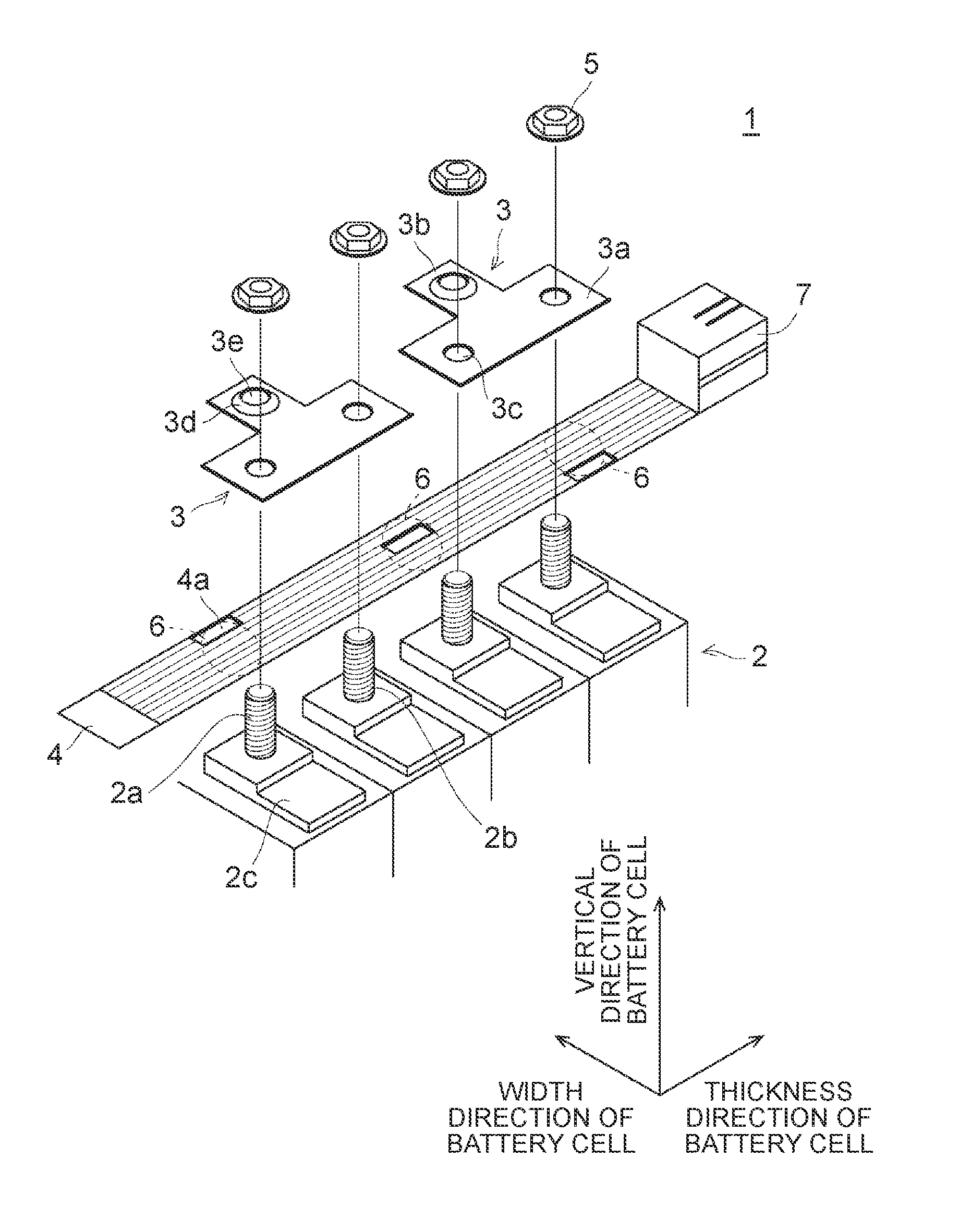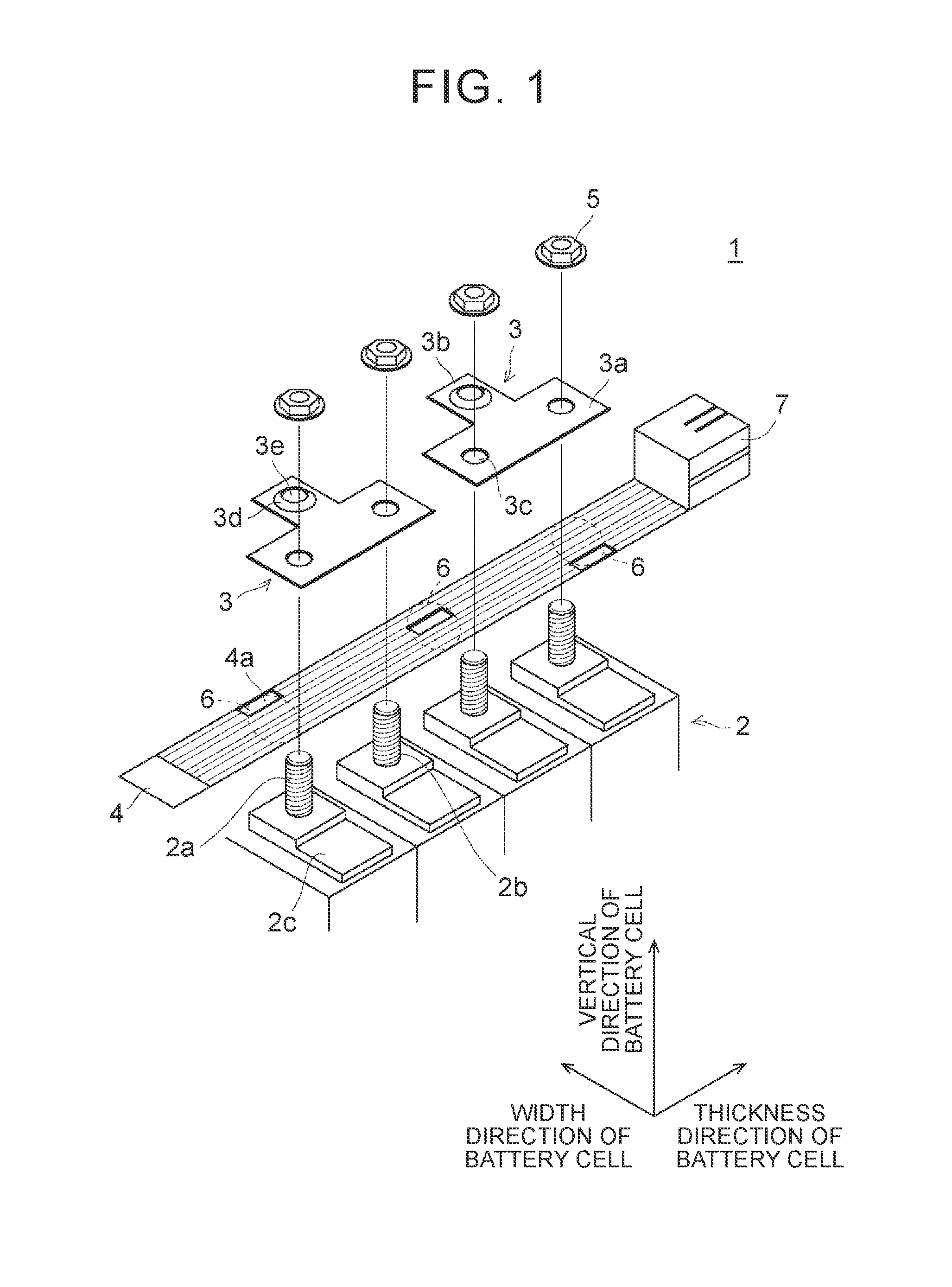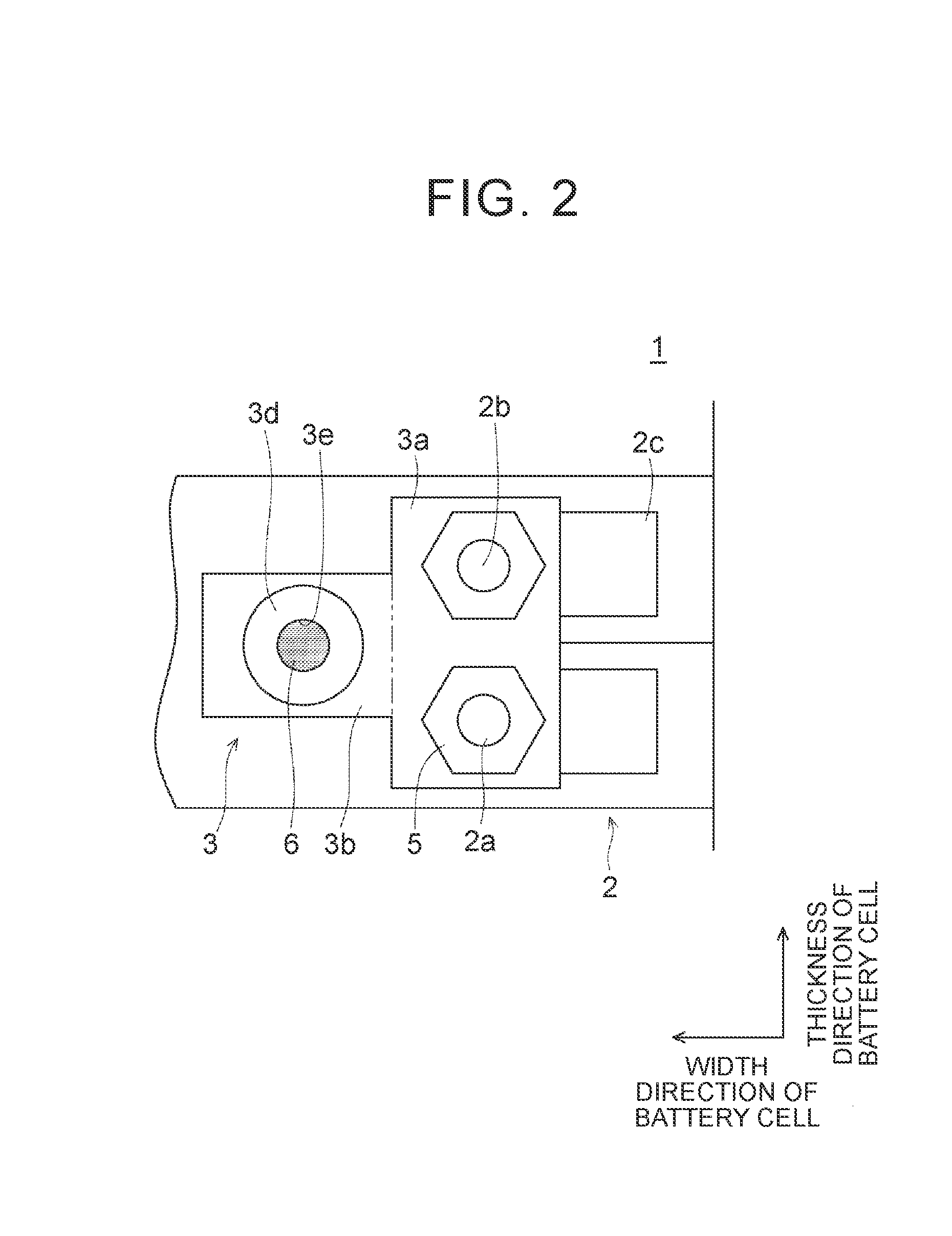Assembled battery
a battery and assembly technology, applied in the direction of secondary cells, cell components, cell structural combinations, etc., can solve the problems of sometimes appearing thickness errors between battery cells, and achieve the effect of preventing poor connection, large workspace, and insufficient strength
- Summary
- Abstract
- Description
- Claims
- Application Information
AI Technical Summary
Benefits of technology
Problems solved by technology
Method used
Image
Examples
embodiment 1
[0025]The configuration of an assembled battery in the embodiment will be described. FIG. 1 is an enlarged exploded view showing an upper part of the assembled battery in the embodiment. FIG. 2 is an enlarged plan view showing the assembled battery in the embodiment. FIG. 3A is a plan view showing a bus bar in the embodiment. FIG. 3B is a lateral view of the bus bar in the embodiment.
[0026]As shown in FIG. 1 and FIG. 2, the assembled battery 1 includes battery cells 2, bus bars 3, and a circuit board 4. The battery cell 2 is a general lithium-ion battery or the like. On the upper surface, an electrode terminal 2a, which is one of a positive electrode and a negative electrode, is provided at one end in the width direction of the battery cell 2, and an electrode terminal 2b, which is the other of the positive electrode and the negative electrode, is provided at the other end.
[0027]As shown in FIG. 1, the electrode terminals 2a, 2b in the embodiment, which are rod screws, protrude upwa...
embodiment 2
[0041]The bus bar 3 in the Embodiment 1 is formed as a flat plate member, but is not limited to this. That is, in a bus bar 31 shown in FIG. 6, a second connection part 31b is connected with a first connection part 31a via a step part 31c, such that the interval between the second connection part 31b and the upper surface of the battery cell 2 is wider. In other words, the bus bar 31 is bent such that the interval between the second connection part 31b and the upper surface of the battery cell 2 is wider than the interval between the first connection part 31a and the upper surface of the battery cell 2. Thereby, it is possible to secure a large workspace for connecting the circuit board 4 with the bus bar 31. Here, in FIG. 6, the same elements as the bus bar 3 in Embodiment 1 are denoted using the same reference characters.
embodiment 3
[0042]The concave portion 3d in Embodiment 1 and Embodiment 2 has a truncated cone shape, but is not limited to this. That is, as shown in FIG. 7A and FIG. 7B, a concave portion 41d of a bus bar 41 may be formed in a truncated square pyramid shape. Further, as shown in FIG. 8A and FIG. 8B, a concave portion 42d of a bus bar 42 may be formed in a hemisphere shape. In short, the shape is not particularly limited, as long as the conductive adhesive 6 can be contained. Here, in FIG. 7A, FIG. 7B, FIG. 8A and FIG. 8B, the same elements as the bus bar 3 in Embodiment 1 are denoted using the same reference characters.
PUM
 Login to View More
Login to View More Abstract
Description
Claims
Application Information
 Login to View More
Login to View More - R&D
- Intellectual Property
- Life Sciences
- Materials
- Tech Scout
- Unparalleled Data Quality
- Higher Quality Content
- 60% Fewer Hallucinations
Browse by: Latest US Patents, China's latest patents, Technical Efficacy Thesaurus, Application Domain, Technology Topic, Popular Technical Reports.
© 2025 PatSnap. All rights reserved.Legal|Privacy policy|Modern Slavery Act Transparency Statement|Sitemap|About US| Contact US: help@patsnap.com



